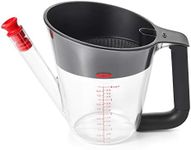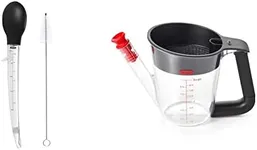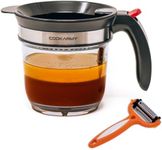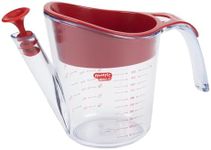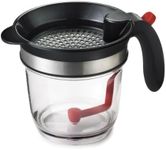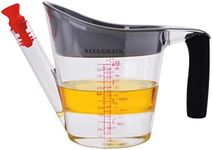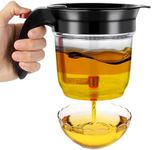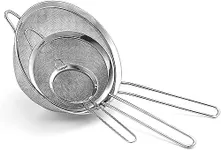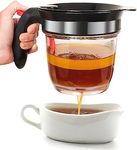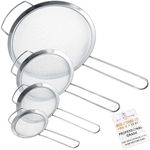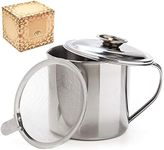Buying Guide for the Best Fat Separators
Choosing the right fat separator can make a significant difference in your cooking, especially if you want to create healthier meals by removing excess fat from your broths, gravies, and sauces. A fat separator is a kitchen tool designed to separate fat from liquids, ensuring that you get a leaner, more flavorful result. When selecting a fat separator, it's important to consider several key specifications to ensure you pick the best one for your needs.CapacityCapacity refers to the amount of liquid the fat separator can hold at one time. This is important because it determines how much broth or sauce you can process in one go. Fat separators typically range from 1 to 4 cups. If you often cook large batches, a larger capacity (3-4 cups) would be more efficient, while a smaller capacity (1-2 cups) might be sufficient for occasional use or smaller meals.
MaterialFat separators are commonly made from plastic, glass, or stainless steel. The material affects durability, ease of cleaning, and heat resistance. Plastic is lightweight and less likely to break but may not be as heat-resistant. Glass is heat-resistant and allows you to see the separation process but can be fragile. Stainless steel is durable and heat-resistant but can be heavier and more expensive. Choose a material based on your preference for durability, ease of use, and how often you plan to use the separator.
Spout DesignThe spout design is crucial for effectively separating fat from liquid. There are two main types: bottom spout and top spout. A bottom spout allows the liquid to be poured out from the bottom, leaving the fat behind, which is generally more efficient. A top spout requires you to pour the liquid out while keeping the fat at the top. If you want a more precise and easier separation, a bottom spout design is usually better. However, if you prefer a simpler design, a top spout might be sufficient.
StrainerMany fat separators come with a built-in strainer to catch larger food particles. This feature is important if you want to ensure a smooth liquid without any chunks. Strainers can vary in fineness, so consider how fine you want the straining to be. If you often deal with broths or sauces that have a lot of solids, a finer strainer would be beneficial. If you mostly work with clearer liquids, a coarser strainer might be adequate.
Ease of CleaningEase of cleaning is an important factor, especially if you plan to use the fat separator frequently. Some models are dishwasher safe, which can save you time and effort. Others may require hand washing. Consider how much time you are willing to spend on cleaning and whether you prefer the convenience of a dishwasher-safe model. Additionally, look for designs with fewer crevices and detachable parts to make cleaning easier.
Heat ResistanceHeat resistance is crucial because you will often be dealing with hot liquids. Ensure that the fat separator can withstand the temperatures you will be working with. Plastic models should be labeled as heat-resistant to avoid warping or melting. Glass and stainless steel are generally more heat-resistant. If you frequently work with very hot liquids, opt for a material that can handle high temperatures without damage.
